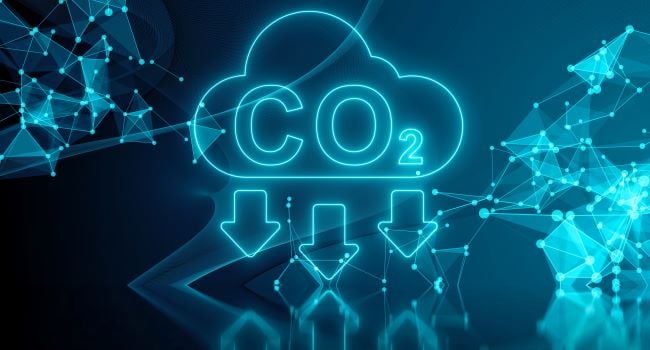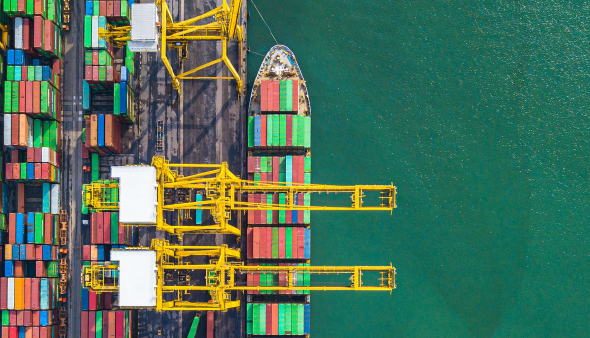Carbon capture: a solution out of thin air?
The miracle of carbon capture promises guilt-free use of conventional ship fuel to support shipping’s transition to green alternatives. Does progress on land give cause for hope as operators seek to avoid expensive decarbonisation options?

When the Intergovernmental Panel on Climate Change (IPCC) released its latest climate mitigation report in April, there was little doubt about the role that would have to play in order to contain global warming. In its chapter on the systemic transformations needed to meet Paris Climate Agreement objectives, the authors state unequivocally that ‘deployment of carbon dioxide removal is unavoidable if net zero CO2 or GHG emissions are to be achieved’.
Carbon removal measures range from long-term, environmental management practices such as reforestation to immediate technology solutions such as the capture and storage of carbon dioxide at the point of generation – such as power stations or industrial plant – or direct from the atmosphere.
For Dr Raphael Slade, Head of Science for the IPCC working group that published the April report, which path you choose matters.
“I find it very scary that carbon dioxide removal is baked into all scenarios in which we meet Paris Agreement obligations,” he told ICS Leadership Insights. “Natural, landscape-scale solutions like reforestation are cost effective. But others, including many around carbon capture and storage, are much more speculative.”
What is CCS?
Carbon capture and storage (CCS) is the process of capturing and storing carbon dioxide (CO2) before it is released into the atmosphere from industrial processes, such as steel and cement production, or from the burning of fossil fuels.
There are three steps to CCS: capturing the CO2, transporting it via pipeline or ship, and storage, often by injection into rock formations deep underground.
Capture of CO2 is done using three main different methods: post-combustion, pre-combustion and oxyfuel. Post-combustion technology removes CO2 from flue gases created from burning fossil fuels, while pre-combustion methods are carried out before the burning of fuel and are achieved by converting the fuel into a mixture of hydrogen and CO2. Oxfuel technology produces CO2 and steam by burning fossil fuels with nearly pure oxygen. To learn more .
Cost and uptake
Cost-effectiveness is a crucial factor. According to the International Energy Agency (IEA), around 65% of operating CO2 capture capacity is at natural gas processing plants, one of the lowest-cost CCS applications. But new developments are increasingly targeting other applications. By 2030, annual capture capacity could amount to around 70Mt from hydrogen production, 70Mt from power generation and 20Mt from industrial facilities producing cement, steel and chemicals.
Those developments will come from a very low base. There are around 35 commercial facilities applying CCS to industrial processes, fuel transformation and power generation, with a total annual capture capacity of almost 45Mt CO2. Under current initial plans, that could reach 220Mt a year by 2030, with the addition of a further 200 or so projects. But even at that level, says IEA, deployment would remain far below that needed for a net-zero scenario.
Slade says the technology is not yet at the maturity levels required. This challenge was highlighted in September when a joint venture partner opted out of the world’s biggest carbon capture project, at the coal-fired Petra Nova power plant in Texas. Power company NRG Energy sold its 50% stake in the carbon capture facility for a tiny fraction – less than half a percent – of the power plant’s construction costs.
According to the Institute of Energy Economics and Financial Analysis, the reason for NRG’s costly exit is the poor performance of carbon capture at the coal plant. The CO2 capture rate at Petra Nova was meant to be above 90%, but may be as low as 55% according to filings with the US Environmental Protection Agency. Technical problems led to the plant failing to meet its 85% uptime requirement. And in May 2020 the unit was taken offline and is only expected to return to service mid-2023.
Marine interest
However, both onshore and now in maritime, greater attention is being given to carbon capture, and efforts are being made to accelerate its technological maturity and effectiveness. In just one month alone before this article was published (September 2022), two high-profile reports were released from a classification society and an innovation centre, with another maritime decarbonisation institution launching its own multilateral study.
“We will need all the solutions that are available, including CCS, to meet decarbonisation targets” – George Plevrakis, Director for Global Sustainability at ABS
The latter study is benign carried out as a cooperation between the Global Centre for Maritime Decarbonisation, the Oil and Gas Climate Initiative (OGCI) and Stena Bulk. Project REMARCCABLE is the world’s first project aimed at demonstrating end-to-end shipboard carbon capture at scale. Over three years it will build and test a marine carbon capture system onboard a Stena Bulk medium range tanker, targeting at least 30% CO2 capture (equivalent to around 1,000kg/hr).
For shipping, as for land-side stakeholders, interest in carbon capture is being driven by a belief it has a core role to play in decarbonisation; there is simply no other option. If IPCC’s scenario forecasting relies on carbon capture to reach Paris Agreement goals, shipping too – in the absence of any imminent influx of cheap zero-carbon fuels – must also look to that solution, regardless of maturity or current cost levels.
According to George Plevrakis, Director for Global Sustainability at ABS, such challenges are not insurmountable and should not hold back research, development and investment in the solution. He told ICS Leadership Insights that the hydrogen and carbon value chains are intertwined and both will be critical to shipping’s decarbonisation. Carbon capture has a crucial role to play in abating emissions and captured carbon will be essential in providing the feedstock that will be needed to create carbon-neutral fuels, he noted.
Current indications are that post-combustion, on-board CCS will be even more costly and energy intensive than land-based solutions, at least initially. Nonetheless, Plevrakis acknowledges that it is ‘all hands to the pump’ when it comes to shipping decarbonisation. “We will need all the solutions that are available, including CCS, to meet decarbonisation targets,” he says.
Market making
While there is work to be done to overcome technical barriers to CCS onboard ships, it is the storage – and what happens to carbon after storage – that poses the most complicated questions. In land-based carbon capture, much of the CO2 is either sequestered deep underground or used for ‘enhanced oil recovery’ – pumped into the furthest recesses of oil fields to force out the stubborn remnants of lucrative oil reserves.
But finding a market for carbon captured at sea could be a tougher proposition, says Abdul Rahim, European Managing Director at Japanese classification society ClassNK.
Speaking to ICS, Rahim notes that it is the quality of carbon captured that matters. He describes a pyramid where the base – the lowest quality of carbon that can be captured – is destined for sequestration in reservoirs. The middle layer is carbon that can fetch a price for industrial use, including the production of carbon-neutral fuels. But the sharp end of the pyramid – and the pinnacle of the price that ship operators will get for their captured carbon – is the food industry. Selling carbon to carbonated drinks companies will be one of the biggest prizes of all.
The problem, says Rahim, is that today only 10-15% of captured carbon (even on land) is of a sufficient quality to sell even for mid-priced industrial usage. If ship operators want to recoup their installation costs, they will be hoping for technology that can capture carbon at a better and more lucrative quality.
It is clear that investment, research and development are all needed if CCS is to prove a viable option for use on board vessels. But, for many, as clean green fuels are still a way off, carbon capture still has a place in the industry’s future to help it achieve net-zero emissions by 2050.
Related content

International carbon collaboration could reshape shipping markets

Emissions focus from charterers promises both scrutiny and support

Allard Castelein: Forging a path for future-proof ports
